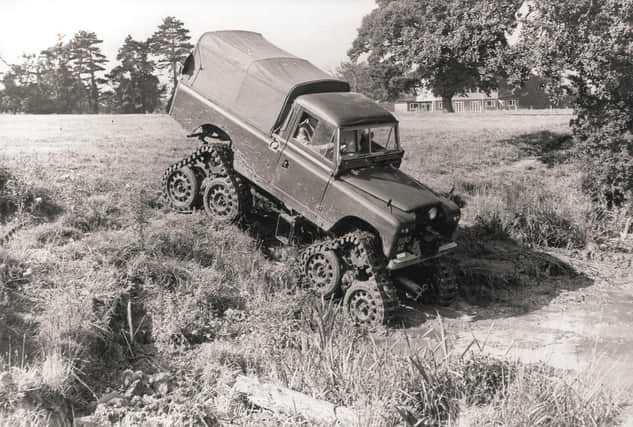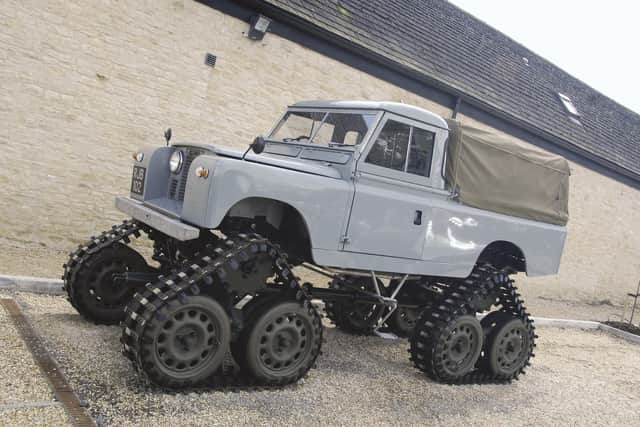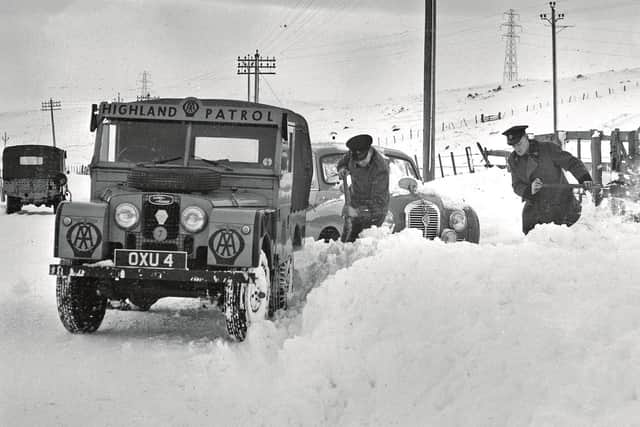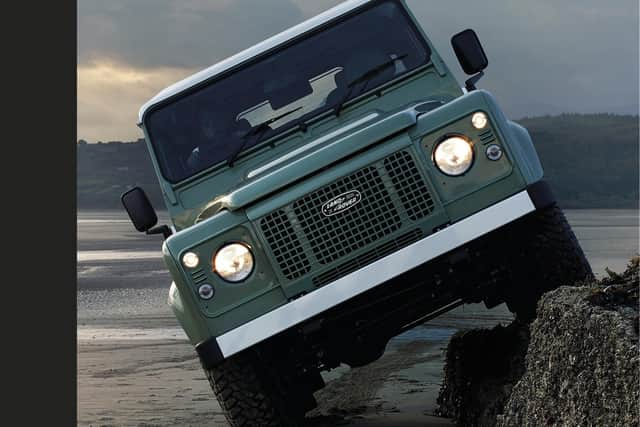Extraordinary Scottish Land Rover model highlighted in new book


Author Giles Chapman has hailed the genius of a Scottish engineer who created the extraordinary variant featured in a new picture book about the classic British all-terrain vehicle.
Biggar-based snowplough maker James Cuthbertson developed the idea of adding tank-like tracks to the wheels to enable access to especially challenging ground conditions.
Advertisement
Hide AdAdvertisement
Hide AdThe model was also tested by the Army for bomb disposal operations.


Land Rover – Gripping Photos of the 4x4 Pioneer, which is published next month, features an image of what is believed to be Cuthbertson himself at the wheel, demonstrating a prototype on a steep incline at the end of a field.
‘Relentlessly effective’
However, he only built 15 such vehicles, between the late 1950s and early 1970s.
One sold at auction for £33,000 three years ago and another stood outside Lix Toll Garage near Killin, by Loch Tay, for many years.


Chapman wrote: “Scottish engineer James Cuthbertson came up with the idea of fusing a Land Rover’s nimbleness with the relentlessly effective use of tracked wheels, as on a tank.
“He sold them to farmers with undulating, marshy land where reducing ground pressure was a benefit.
“Using a sturdy subframe, each track used four narrow road wheels, complete with pneumatic tyres, and industrial-strength power steering was, of course, included.”
Stepladder to reach door


Chapman told Scotland on Sunday: “This was in an era before quad bikes with balloon tyres.
Advertisement
Hide AdAdvertisement
Hide Ad“The version was intended for the worst kind of land with craters and ravines – and it really did work.
“But it was a bit of a Heath Robinson contraption. You would have had to take off the tracks to use it as a normal vehicle, which would have been a hell of job.
“A stepladder would also have been needed to reach the door.”


Metier
Chapman said the vehicle’s unusual characteristics also made it perfect for dealing with explosives.
He said: “Where it found its metier was in bomb disposal and I can imagine the Army testing it at their base at Chertsey [the former military vehicles research unit in Surrey].
“It could inch its way very carefully over ground by having the ability to spread its weight, like the current remote-controlled vehicles which also have tracks.
“Useful when a hair trigger could set off the bomb.”
Motoring writer Alan Douglas observed: “As Land Rover conversions go, the Cuthbertson is one of the strangest but a credit to the ingenuity of its creators, Cuthbertsons of Biggar.
‘Very much collectable’
“They replaced the standard wheels with four sets of triangular tracks which spread the weight on the ground and let the vehicle cross boggy ground which would otherwise be impassable.
Advertisement
Hide AdAdvertisement
Hide Ad“They were mainly built for the forestry industry, so if you can find one, they are very much collectable.
“One of the few in existence is on display at the National Motor Museum at Gaydon in Warwickshire.”
A spokesperson for the museum said: “The front tracks are steerable in the conventional way but, when four-wheel drive is engaged, each track is powered with different motion.
“This stops the side-to-side scrubbing of the tracks when turning, which tends to happen on conventional tracked vehicles.
‘Enormous Meccano set’
“The very high ground clearance makes it well-suited to marshy ground, although its poor climbing ability makes some operations, such as scaling the banks of a riverbed, difficult.”
Chapman said the Land Rover was ripe for being customised by inventors like Cuthbertson because of the way it was built: “It was essentially an enormous Meccano set, so was easy to adapt for weird applications.”
Other customised Land Rover examples featured in the book included versions with cherry pickers, extended as fire engines and pulling trucks on a railway line as a road-rail vehicle with train-style flanged wheels.
Ice cream van
One was converted as an ice cream van at Whitby in Yorkshire, while another had a conveyor belt added to load luggage onto aircraft.
Advertisement
Hide AdAdvertisement
Hide AdConventional versions have been driven by the Queen, and the emergency and associated services such as police, Coastguard and the Red Cross.
Another of the book’s illustrations shows one of the AA’s Highland Patrol Land Rovers being used to pull a car from a snowdrift in the 1950s.
A message from the Editor:
Thank you for reading this story on our website. While I have your attention, I also have an important request to make of you.
With the coronavirus lockdown having a major impact on many of our advertisers - and consequently the revenue we receive - we are more reliant than ever on you taking out a digital subscription.
Subscribe to scotsman.com and enjoy unlimited access to Scottish news and information online and on our app.
With a digital subscription, you can read more than five articles, see fewer ads, enjoy faster load times, and get access to exclusive newsletters and content.
Visit https://www.scotsman.com/subscriptions now to sign up.
Our journalism costs money and we rely on advertising, print and digital revenues to help to support them.
By supporting us, we are able to support you in providing trusted, fact-checked content for this website.
Joy Yates
Editorial Director
Comments
Want to join the conversation? Please or to comment on this article.